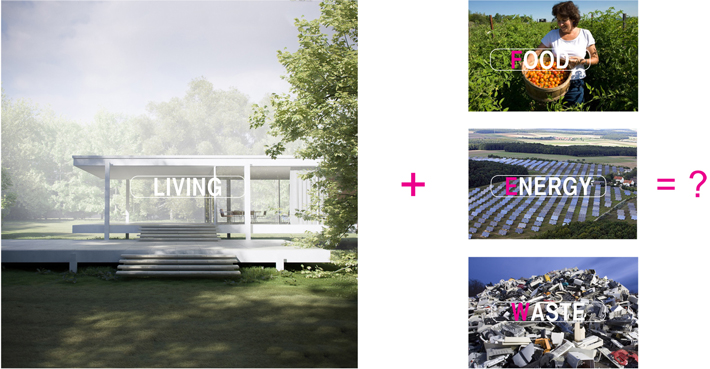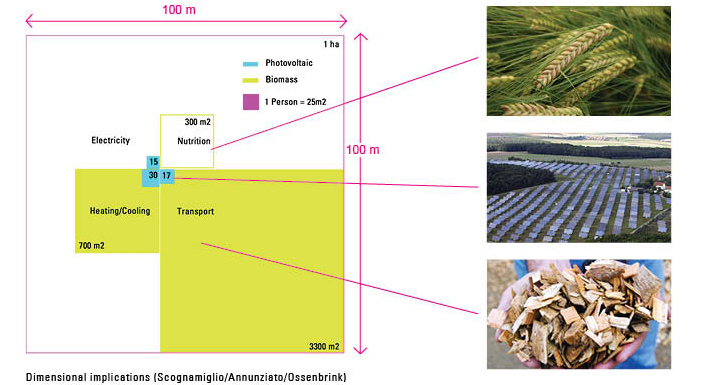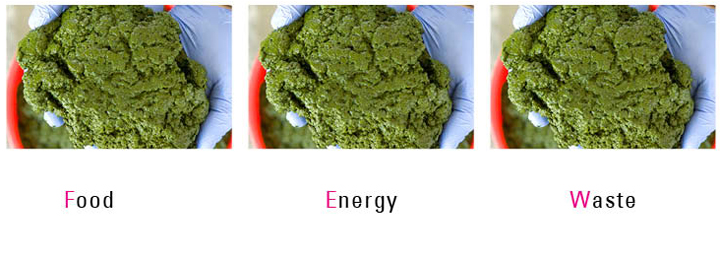 ZERO+ looks at the transformation of dwelling in the city of Milan, in the context of climate change and as a result of the new imperatives of the European Challenge 20/20/20: reducing greenhouse gases by 20%, increasing energy efficiency by 20% and reaching 20% of renewable energy by 2020. The studio challenges students to rethink existing living models by integrating Farming, Energy production and Waste management systems (FEWs) to the house of the 21st century.
ZERO+ looks at the transformation of dwelling in the city of Milan, in the context of climate change and as a result of the new imperatives of the European Challenge 20/20/20: reducing greenhouse gases by 20%, increasing energy efficiency by 20% and reaching 20% of renewable energy by 2020. The studio challenges students to rethink existing living models by integrating Farming, Energy production and Waste management systems (FEWs) to the house of the 21st century.
The establishment of the City, from its very inception, is the result of a fundamental separation between places of consumption – located within the city limits – and places of production, where enough surpluses of raw materials and food are created to support city development. Today, the impact of cities on places elsewhere, be it hinterlands or places far away – the so-called city footprint – is reaching extraordinary proportions and threatening a drastic reduction of bio-diversity, air and water pollution, and the depletion of natural resources.
While there is general consensus that cities are indeed a good thing – “our greatest invention”, according to Glaeser in The Triumph of the City – we need to find ways of offsetting some of the environmental costs of maintaining today’s megalopolises by bringing production and management of energy, food and waste back into the fabric of the city.
The Studio explores the architectural implications of combining a traditional residential typology –single or multi-family housing – with one or more FEWs components. Hybrid forms of aggregation and synergetic opportunities will emerge from the logics of the FEWs, promoting novel adjacencies, circulation patterns and spatial configurations – and ultimately generating new forms of living.
Project description
Urban Scale/Morphology: Over the next few years, all new construction will have to be nearly Zero Energy Building (Directive 2010/31/EU); however, because of the specific scales of energy production, the traditional size of building lots in the city is not sufficiently large to achieve the Zero Energy mandate. Similarly, current levels of food production and waste processing practices cannot sustain population densities of contemporary cities like Milan without devastating consequences for the environment. In short, the new energy paradigm calls into question the very premise of the city – that is, its high density. Accordingly, the studio will promote entirely new strategies of subdividing urban land and using public space in order to reduce environmental degradation and to attain true energy independence.
Building scale/Typology: While environmental measures are drastically transforming our cities, architects have struggled to find their own voice: by and large, issues of technical feasibility, efficiency and cost reduction alone have been driving the discourse on sustainability and the implementation of the new energy policies to date. The studio attempts to recast the on-going debate on sustainability in the built environment from a preeminently architectural position. Students will investigate the transformation of existing housing typologies by injecting FEWs systems into traditional residential programs. The project will explore the spatial, programmatic, and formal implications at the scale of the individual building – and the potential for industrial processes of production and disposal of food, energy and waste to propel the next architectural revolution.
Component scale/Technology: The scale of the individual component, particularly within the envelope of the building, offers perhaps the most productive opportunities for implementing environmentally friendly strategies in architecture. The skin of buildings is in direct contact with the surrounding environment, exposed to the forces of nature, and best positioned to harness wind and solar energy, reduce heat loss and condensation, foster daylighting and natural ventilation, and generally promote an efficient and healthy relationship between the building’s inside and the outside. Within the time limits of the semester and in the context of a 2nd year bachelor class, the studio will introduce the students to a range of environmental strategies at the scale of individual living units, using the extensive documentation on recent Solar Decathlon events as point of departure.
Learning Objectives: The pedagogical objective of the Architectural Design Studio 2 is to develop abilities to integrate issues of site, program, structure, material components and assembly into a building design of moderate complexity. This studio in particular explores the social, economic, material, cultural and architectural issues intrinsic to the program of housing and to the processes that are vital to human survival. The studio also tests students’ ability to work in collaboration with others and in multidisciplinary teams to successfully complete design projects.
Organization: Students will be allowed to work individually or in groups of 2 to 4 people; while independent work is encouraged, some of the FEWs technologies might benefit from serving multi-family housing. Individual students will focus on self-sufficient units at the detail scale, while teams will develop new social scenarios by incorporating district-scale food production, community-wide waste processing plants and distributed models of power generation to multi-family buildings, following the formula: number of units = number of students2.
Site scenario: The chosen sites are intentionally located in areas that are easy to reach by public transportation, as students will be required to make site visits at appropriate moments during the semester. Students will be able to choose between two selected sites: the first one is an Area di Trasformatione urbana (ATU) located within the city of Milan, offering the opportunity to engage with the urban fabric of the city. The second site is located just outside Milan, in a rural setting where natural resources may inform the design strategy. The sites are large enough to provide a parcel of land to each student or team, on the bases of 1 hectare per housing unit.
Programmatic frame: The proposal should include one dwelling unit: a two-bedroom, one bathroom apartment with a kitchen and other service spaces, for a total of approximately 100m2.
Students will be asked to incorporate one or more FEWs technologies as integral part of the site: food (hydroponics, aquaculture, traditional farming, hothouse agriculture, farmer’s market, etc.), energy (geothermal, wind micro-turbines, photovoltaic, solar thermal, biomass, algae biofuel, etc.) and waste (waste processing, methane collection, anaerobic digestion, landfill, recycling, composting, etc.).
Semester Structure: The studio emphasizes individual exchange with instructors in 3 different formats:
Desk-crit: Individual meeting with the instructor at the student’s desk, typically it includes an informal conversation and the review of draft material.
Pin-up: Individual presentations using material printed and pinned on the wall; pin-ups are intended to help students in formalizing their design process and presenting progress results throughout the semester; individual pin-ups are open to other students, yet they are designed not to disrupt work in the classroom.
Review: Formal presentation to the class with specific deliverables provided by the instructor, including large-format boards, models, prototypes, etc. It is mandatory for all students to present and to attend the entire review; an invited jury may be in attendance.
Method of Assessment
Student’s evaluation is based on the following requirements:
- Design of the housing and its associated site, addressing the course objectives, program and comprehensive design studio criteria;
- Timely completion of the work for the required benchmarks;
- Final presentation through drawings of the highest quality at the prescribed scales;
- Final presentation models at prescribed scales;
- A final text as a lucid narrative;
- Mandatory attendance: students must attend all studio meetings, arrive on time and work in the studio for the entire time period scheduled;
- Full documentation of the research and analysis, progress, and completed project.
Presentation Requirements
Plans, sections and elevations should demonstrate an ability to integrate the required systems and criteria into a coordinated architectural project. Drawings should include physical and spatial context (adjacent structures), scale figures, and materials/shadows where appropriate. Include selective process models and drawings to show evolution of conceptual thinking. Scale of drawings can be increased with instructor’s approval.
Drawings:
|
1/500 |
|
1/200 |
|
1/100 |
|
1/50 |
|
1/50 |
|
1/100 |
|
1/50 |
|
1/20 |
|
Variable |
| Models: | |
|
Variable |
|
1/100 |
|
1/25 |
| Diagrams (3D and orthographic): | |
|
|
|
|
|
|
|
|
|
|
| Written Design Statement: | |
| 1 page abstract of key concepts |

